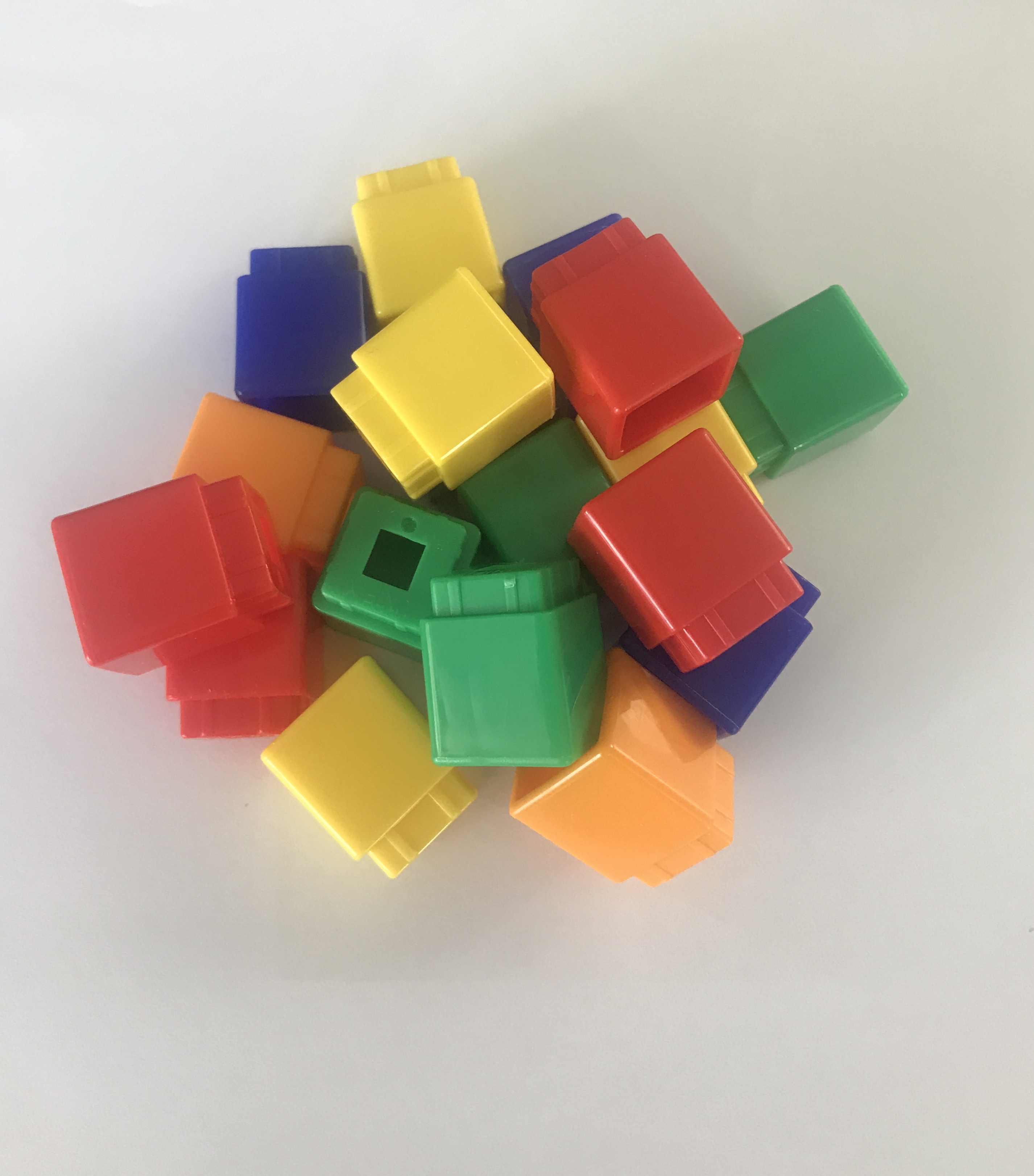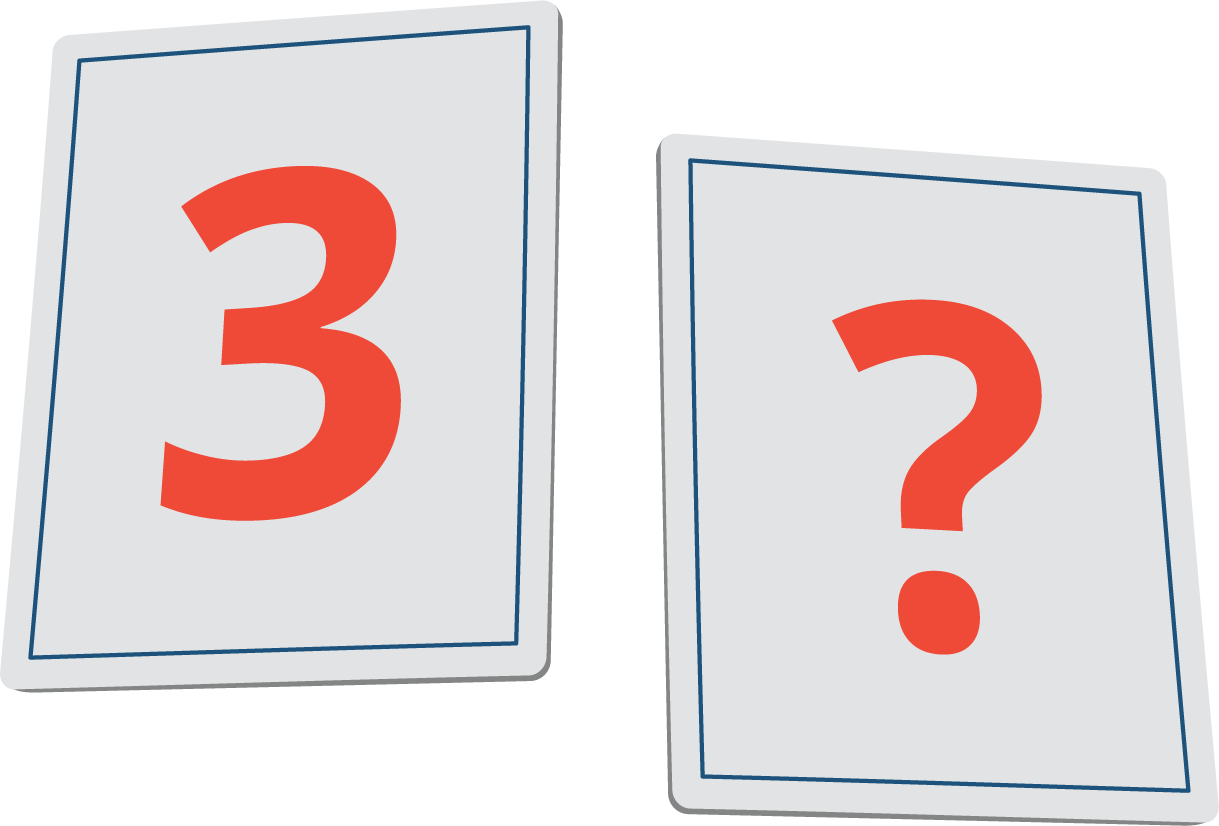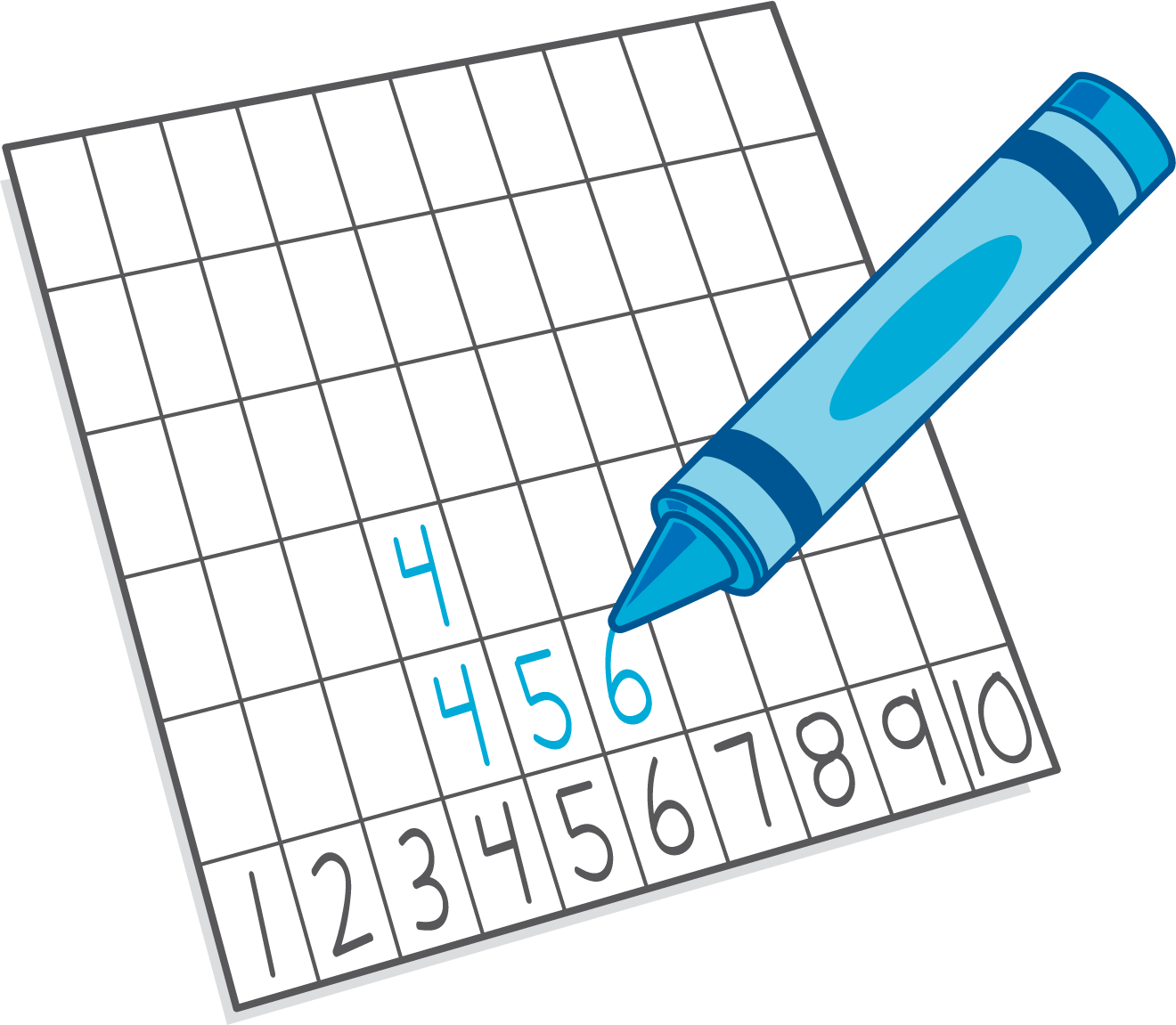Lesson 3
Count Carefully
Warm-up: Notice and Wonder: Pile of Connecting Cubes (10 minutes)
Narrative
Required Materials
Materials to Gather
Required Preparation
- Create a pile of 18 connecting cubes to display.
Launch
- Groups of 2
- Display a pile of 18 connecting cubes or the image.
- “What do you notice? What do you wonder?”
- 1 minute: quiet think time
Activity
- “Discuss your thinking with your partner.”
- 1 minute: partner discussion
- Share and record responses.
Student Facing
What do you notice?
What do you wonder?

Student Response
For access, consult one of our IM Certified Partners.
Activity Synthesis
- “How many cubes are there?” (A lot. We can’t see all of the cubes, so we can’t count them.)
Activity 1: Counting Collections (10 minutes)
Narrative
The purpose of this activity is for students to count their collection in a way that makes sense to them and notice that the number of objects stays the same when a collection is counted multiple times (MP8). Students are provided with 10-frames and counting mats to help them organize their collections. Students use appropriate tools strategically as they choose which tools help them count their collections (MP5).
Advances: Speaking, Conversing, Representing
Supports accessibility for: Conceptual Processing, Organization
Required Materials
Materials to Gather
Required Preparation
- Each student needs a collection of 11–20 objects.
Launch
- Groups of 2
- Give each student a collection of objects and access to 10-frames and a counting mat.
- “How many objects are in your collection?”
Activity
- 3 minutes: independent work time
- “Tell your partner how many objects are in your collection.”
- 30 seconds: partner discussion
- “Switch collections with your partner. Do you agree with your partner about how many objects are in the collection?”
- 3 minutes: independent work time
Student Response
For access, consult one of our IM Certified Partners.
Advancing Student Thinking
If students count each object more than once or do not count some of the objects, consider asking:
- “How many objects do you have? How do you know?”
- Display the counting mat or the 10-frame and ask “How can you use this mat to help you make sure that you count each object?”
Activity Synthesis
- “Show your partner how you counted and tell your partner how many objects are in your new collection. Did you and your partner count the collection the same way? Did you agree about how many objects are in the collection?”
- “We might count the objects differently than our partner, but we should get the same number if we count every object one time.”
Activity 2: Count Carefully with Friends (10 minutes)
Narrative
Required Materials
Materials to Gather
Required Preparation
- Create a pile of 16 connecting cubes to display.
Launch
- Groups of 2
- Display a pile of 16 cubes.
- “Clare, Andre, and Noah all counted these cubes. Clare says there are 15 cubes. Andre says there are 16 cubes. Noah says there are 17 cubes. Can they all be right?” (No, they all got different numbers.)
- 30 seconds: quiet think time
- Share responses.
Activity
- “Why might they have gotten different answers?“
- 1 minute: quiet think time
- 1 minute: partner discussion
- Share responses.
Student Facing
Clare, Andre, and Noah all counted these cubes.
Clare says there are 15 cubes.
Andre says there are 16 cubes.
Noah says there are 17 cubes.
Can they all be right?
Student Response
For access, consult one of our IM Certified Partners.
Activity Synthesis
- Select a student to figure out how many cubes there are.
- “Is there another way that we can count the cubes?”
- Select a student to figure out how many cubes there are in another way.
- “What is the same about how _____ and _____ counted the cubes? What is different?” (They both counted all of the cubes 1 time. They both counted 16 cubes. _____ put them in a line. _____ used a counting mat.)
- “There are 16 cubes.”
- Write or display the number 16.
Activity 3: Introduce Find the Pair, Make 5 (25 minutes)
Narrative
The purpose of this activity is for students to learn stage 1 of the Find the Pair center. Students develop fluency with addition and subtraction within 5 as they find the number that makes 5 when added to a given number. Each student draws a hand of 5 cards. Students take turns asking their partner for a card that goes with one of their cards to make 5. When students receive a match, they write an expression. Students draw a new card when they do not receive a match. Students may use math tools such as 5-frames or draw a picture to make 5.
After they participate in the center, students choose from any stage of previously introduced centers.
- Number Race
- Subtraction Towers
- 5-frames
Required Materials
Materials to Gather
Materials to Copy
- Find the Pair Stage 1 Recording Sheet
Required Preparation
- Before playing, remove the cards that show numbers greater than 5.
- Number Race, Stages 1 and 2
- Subtraction Towers, Stage 1
- 5-frames, Stages 1 and 2
Launch
- Groups of 2
- Give each student a set of cards, a recording sheet, and access to two-color counters, 5-frames, and 10-frames.
- “We’re going to learn a center called Find the Pair.”
- “Put your cards in a pile in the middle of the table. You and your partner will both draw 5 cards. Keep your cards hidden from your partner.”
- Demonstrate drawing 5 cards. Invite a student to act as the partner and draw 5 cards.
- “I am going to look at my cards. I need to choose 1 card and figure out which number I need to make 5 with the card.”
- Display a card with the number 4.
- “My card says 4. What card do I need to go with it to make 5?” (1)
- “I need a 1 card. I’m going to ask my partner if they have a 1 card.”
- “If my partner has a 1 card, they will give it to me. I will put the 4 card and 1 card down as a match and write an expression.”
- “If I have a 4 card and a 1 card, what expression should I write?” (\(4 + 1\) or \(1 + 4\))
- “If my partner doesn’t have the card that I asked for, I draw 1 more card from the middle. We will keep playing until we run out of cards.”
- Invite students to play one game with their partners and answer any questions about the rules of the game.
- “Take turns playing with your partner.”
Activity
- 8 minutes: partner work time
- “Now you can choose another center that you would like to do. You can also choose to continue playing Find the Pair.”
- Display the student page with center choices.
- Invite students to work at the center of their choice.
- 10 minutes: center work time
Student Facing
Choose a center.
Find the Pair

Number Race

Subtraction Towers

5-frames

Activity Synthesis
- “As you played Find the Pair, how did you figure out what number you needed to make 5?”
Lesson Synthesis
Lesson Synthesis
Display pile of 18 connecting cubes from the warm-up.
Invite a student to count the pile of connecting cubes.
Write the number 18.
“There are 18 cubes.”
“Elena counted this pile of cubes and said that there are 19 cubes. What should she do next?” (She should count again. She should make sure she counted each cube 1 time.)
Cool-down: Unit 6, Section A Checkpoint (0 minutes)
Cool-Down
For access, consult one of our IM Certified Partners.